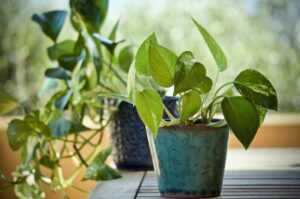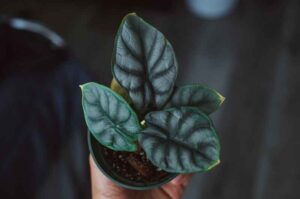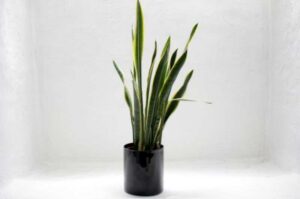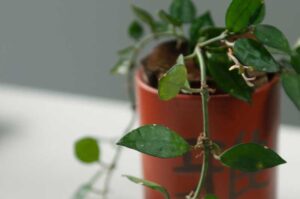Why Is My Aglaonema (Chinese Evergreen) Drooping?
Chinese Evergreen is a green plant with gorgeous red spots that offer a bold and vibrant look. The low maintenance nature and the bright color and patterns of the plant make it so desirable, that everyone just loves this plant. In this article, we will be discussing some reasons why this beautiful plant, Chinese Evergreen is drooping.
Droopy leaves in Aglaonema are mostly due to improper watering and inefficient lighting conditions. Apart from these, other causes include the selection of wrong potting mix, exposure to extremely low temperatures, root-bound plants, disease pest attack, and lack of nutrition.
Excessive water is one of the leading causes of drooping in Aglaonema leaves. If there is a combination of yellow and brown leaf margins, with moist soil and droopy leaves, you should check the watering routine of your plant. Less water will, however, lead to yellow, brown, crispy leaves and brown soil.
If exposed to too much direct sunlight, the Aglaonema foliage may curl under for protection against the harsh sunburn. In case of insufficient lighting, the leaves begin to wilt and droop, showing effects of weakness.
If you are experiencing any of these symptoms, the best thing you can do to save your plant is to adjust your plant’s light and water situations. You can refer to our guide on Algoanema care to get the best growing condition for this plant.
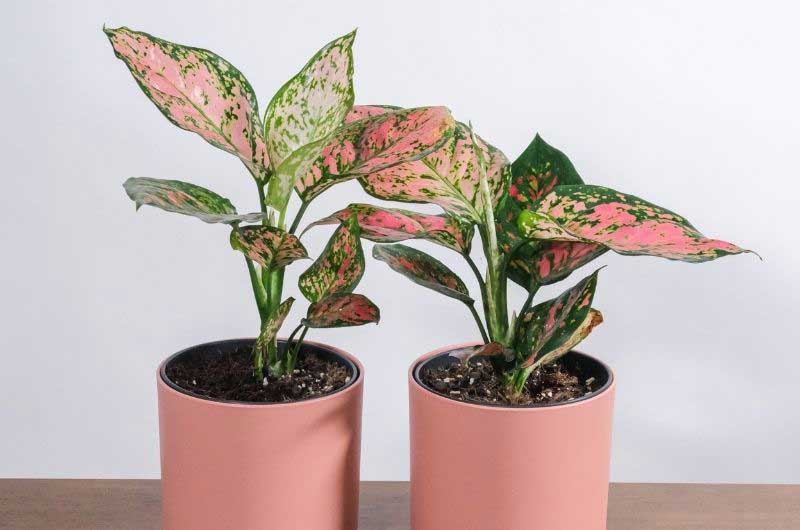
Why Is My Aglaonema Drooping?
Here are some of the factors why your Chinese Evergreen plant is drooping.
Underwatering
Underwatered and dried plants can be a leading cause of drooping. The plant starts yellowing and the leaves become crispy. Eventually, the soil dries failing to provide the plant with the required water and nutrients. As a result, the leaves start wilting and the plant droops.
You can do a few steps to prevent underwatering.
- Check the potting soil regularly with your fingertip to know the moisture status of the soil. If it is completely dry then go for watering.
- Water your plant until the water runs out from the drainage holes of your pot. Make sure to completely saturate the potting soil.
- You can also make the soil saturate by soaking the water through the drainage holes. Keep the pot inside a basin or a tub with 3 to 4 inches of standing water. The water will be soaked up through the drainage holes.
- Drain the extra water, so that there shouldn’t be any risk of waterlogging.
- Also, you can use some self-watering systems to automate the process of watering.
Excessive water
If you water your Chinese Evergreens more than it needs, the leaves will become yellow. Yellowing of leaves is the first symptom of an overwatered plant that can further accelerate the process of decaying the plant.
If you keep over-watering the plant, eventually, the leaves will start to turn brown and the root will rot. The rotten root will cause your plant to droop and die.
In this situation, you can save your Aglaonema by providing it with the optimum requirements for watering. A very helpful feature of an Aglaonema is its communicative nature. The plant is a good communicator and tells what it needs.
Your plant might be drooping due to waterlogging. In order to stop it, you have to water it consciously and also make sure that the potting mix or soil you are using has good drainage.
Solutions:
When it comes to ideal watering requirements, the plant needs to be watered quite often during summer and spring but less during winter. You need to make sure that the topsoil of your plant is only moist and not wet.
You have to keep the bulk of water from clogging the soil. Since the drainage of the soil is not very well, you should avoid overwatering your plant if you want it to stop drooping.
To check the moisture of the soil, dig your finger into the pot. If you notice that the topsoil is dry, water it. Or, you can leave it for some time.
Inefficient lighting
Inefficient lighting can cause drooping in your Chinese Evergreens. Their plant, though flexible to almost any lighting situation might not do very well in full shade or full sun exposure.
Being a heat-loving plant, full shade might damage the structure of the plant but not let the drainage or enough water. Moreover, lack of sunlight can cause the plant to stop producing the required amount of chlorophyll, making it yellow and brown. At the same time, excessive direct heat will cause sunburn making the plant lose all its color and fade.
Solutions:
In the case of most houseplants, they can use as much light as is given to them. But, in the case of Aglaonema, this is a little flexible. Aglaonemas do well both in sunlight and shade.
Particularly, the green Aglaonemas can tolerate low light conditions very well. When it comes to the other variants of the plant, the bright and vibrant colors thrive in North-facing sunlight where the light is weak yet present. This helps to give the plant the ideal-colored speckles and patterns.
Wrong Selection of Potting Mix and Container
Your Aglaonema needs to be potted in standard potting soil. If you don’t want to use a potting mix, much like Philodendron and pothos, you can use clear water or charcoal added water and feed the plant once a month. This will also make the plant thrive.
If the plant is in a pot with not enough space to grow properly, the plant will get rootbound. This can cut off the required nutrition. When the plant becomes root-bound and there is not enough space left, the constriction in the pot makes the plant droop
Solutions:
To stop this, you must shift your plant to a bigger container where there is enough space for the roots to grow.
If your plant is root bound, take the plant out of its pot carefully. Massage the roots to loosen them from the soil and wash it. The new pot you choose should be a few inches higher than the previous one so that placing the plant does not cause root bound again.
Also, to prevent root-bound you need to be very frequent with the propagation of your Chinese evergreen plant.
Pests and Diseases
Some of the most common pests in Aglaonema are root mealybugs, scales, aphids, and mites. This plant can suffer from these diseases during its stage of propagation.
The most serious Aglaonema diseases are:
Fusarium stem rot: This is a soft mushy rot at the base of a cut or the plant itself. The possible way out is to exterminate the part of the plant that has been infected
Pythium: This is one of the most common root problems and occurs due to waterlogging in overwatered plants.
Myrothecium and Colletotrichum: These produce holes and spots on the leaf during propagation.
Solutions:
To control pests and insects you can spray insecticide to make the pests go. If your plant is too much infected, you can remove off the specific part of the plant.
Physical Injury and Lack of Nutrition
If your plant has suffered a physical injury at any point, it might be the cause of drooping. If a tip broke off, or you got an infected plant or seed from the nursery itself, drooping can occur.
Lack of nutrition can be a result of many reasons including inappropriate soil mix. It needs to be tested to make sure that the plant doesn’t die.
Solutions:
This problem can be prevented by adding good compost or fertilizers to boost the quality of the soil. Also, handle your plants with care and make sure to check thoroughly while buying them at the nursery.
Root Bound Plants
Chinese evergreens can tolerate being root bound, but if your plant is too crowded, the roots will start poking out of the drainage hole. This is your indication that it’s time to change the plant’s container. Do this process during the spring or summer when the plant is actively growing.
Solutions:
Choose a pot that’s 3-4 inches wider than the current container. Very carefully, loosen your plant around the edges by rubbing the plant with your hand. This way you have to free it from the container. Place it in the new container, top it off with fresh soil, and water the plant nicely to make it grow.
Temperature
Aglaonema is a heat-loving plant. Its ideal growth conditions are indirect strong sunlight in case of colored foliage and lowlight place with high humidity in case of green plants.
The temperature should be between 60-degrees at the night and 75 to-80-degrees in the morning. In colder regions, these plants droop very easily and have a greater chance of root rotting and waterlogging.
So, these were some of the major causes why your Aglaonema is drooping. Other than this, infected plants might also be harmed and droop, and ultimately die.

